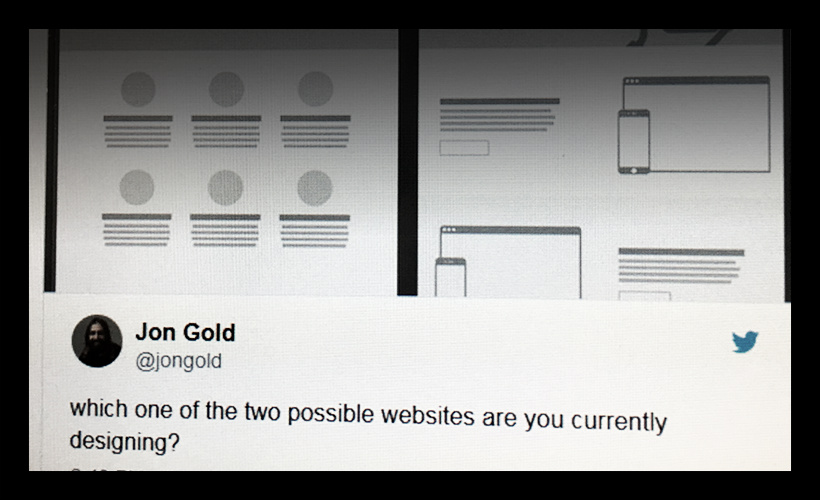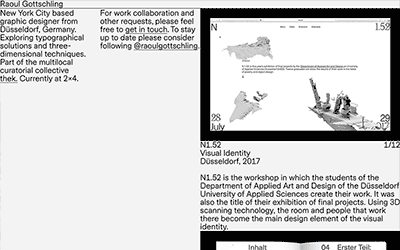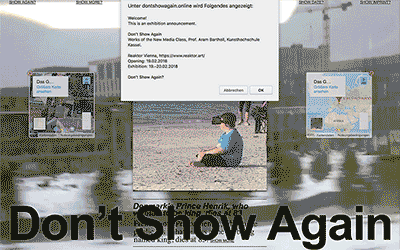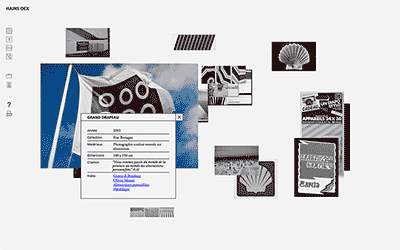qual dos dois...

A deixa perfeita para contraste. Seguimos (saltamos) de várias comparações a filosofias OuBaPo e de quando a web ainda era um free for all em webdesign — ie, o mobile não forçara a sua standarização de layouts em soluções de RWD que acabaram com qualquer criatividade de maior entre os seus agentes, ie agências. Em sentido perfeitamente inverso à proposta feita antes, mas do limiar do boom da internet-de-bolso e todas as revoluções sociais que ainda hoje nos embrulham, um "digital webcomics" (*)Definição nossa, mas desafiamos correcções. que foge ao modelo mas abraça linguagens web — quis o destino que segundos antes desta mudar radicalmente de direcção: "the culmination of a work of several years led by Anthony Rageul as part of a Master of Visual Arts supported at the University of Rennes 2".
For Tony, a "good" digital comic would be a comic book that would give the reader an active role in forcing him to move the story forward (to display this comic sequentiality) to act through his screen.
Tony's thesis is as follows: one of the avenues that the digital comic must explore (and in his view, the main track if it wants to have its own identity) is interactivity. Thus, he explains, "the" really "digital comic would be a singular medium, different from the comic strip. Starting from this postulate, I wanted to know what the digital comic was when the author, the artist, fully takes into account the potential offered by the digital, and particularly the interactivity."
in "Prise de tête de Tony, licence Creative Commons, 2009" 9 mar 2017 / google translate!
Na primeira pessoa:
Comics on paper and digital comics are not that different : be it on comic blogs or on i-phones, we continue to scroll plates designed for a paper format. Is this for the comics world a way to reject digital technologies? In my opinion, this is more related to a lack of awareness.
The viewer is a special reader-actor — there will be no story (or at least a truncated one) without the full participation of the viewer.
in "Interactive comics : how to tell a story? Prise de Tête (Go a-head), a suggestion between minimalism, interactivity and storytelling" 2009
De narrativas interactiva, turbomedias: quase lá. Sabem o que pensamos de motion comics, mas há uma versão mais benevolente que a nossa, aquela que vos permite uma opinião:
But in reality, reading this digital comic becomes more of an experience more than a traditional reading. Another question: is Prise de tête a real comic? I mean, is it anything other than a graphic and sequential experiment? After hesitating for a long time, I say yes, but only to the extent that the viewer agrees that he will have to find meaning himself.
in "Prise de tête de Tony, licence Creative Commons, 2009" 9 mar 2017 / google translate!
Voltamos a paralelos com a própria web: a proposta anterior teve o azar de ficar datada no tempo por razões tecnológicas que mudaram hábitos de design ainda que as tecnologias inerentes se tivessem mantido as mesmas.



Talvez por isso não devêssemos já descartar a solução encontrada, por vezes os miúdos vão querer mesmo forçar o difícil.
In its ruggedness and lack of concern to look comfortable or easy, Brutalism can be seen as a reaction by a younger generation to the lightness, optimism, and frivolity of today's web design.
in "Brutalist Websites" s/d
E o nosso take pessoal do debate artsy vs get shit done, comix wise incluído.
If a website fails to do do what it sets out to do, that, I care about. Design is failing there. But if a website has a design that is a bit boring, but does just what everyone needs it to do, that's just fine.
in "Website Sameness™" 4 fev 2018
